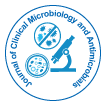

Perspective - (2023)Volume 7, Issue 3
Nematodes, also known as roundworms, are tiny, unsegmented worms that inhabit a wide range of environments, from soil and water to plants and animals. While some nematodes are beneficial, playing crucial roles in nutrient cycling and pest control, others can have a detrimental impact on human health.
Parasitic nematodes
Several species of parasitic nematodes have evolved to exploit the human body as a host, leading to various diseases and health problems. These parasitic nematodes can be broadly categorized into intestinal, tissue, and filarial nematodes.
Intestinal nematodes: They are one among the most common parasitic worms infecting humans. They include species like Ascaris lumbricoides (roundworm), Trichuris trichiura (whipworm), and the hookworms (Necator americanus and Ancylostoma duodenale). Infections usually occur through ingestion of nematode eggs or skin contact with contaminated soil. Symptoms can range from mild abdominal discomfort to severe malnutrition and anemia.
Tissue nematodes: Filarial worms responsible for lymphatic filariasis (caused by Wuchereria bancrofti , Brugia malayi , and Brugia timori ) and onchocerciasis (caused by Onchocerca volvulus ), reside in the lymphatic and subcutaneous tissues. These infections often lead to disfiguring conditions like elephantiasis and river blindness, which have severe socio-economic implications in endemic regions.
Filarial nematodes: They are transmitted to humans through the bite of infected mosquitoes. They can cause chronic and debilitating diseases like lymphatic filariasis and onchocerciasis, affecting millions of people in tropical and subtropical regions.
Neglected tropical diseases
Many nematode infections fall under the category of Neglected Tropical Diseases (NTDs). NTDs primarily afflict people in impoverished and underserved regions, often with limited access to healthcare and sanitation facilities. These diseases perpetuate the cycle of poverty, as they can lead to long-term disabilities and decreased productivity.
Diagnostic and control measures
The diagnosis of nematode infections typically involves the examination of stool samples for intestinal nematodes or blood samples for filarial infections. Modern diagnostic methods, including molecular techniques, have improved accuracy and detection at earlier stages.
Control and prevention strategies for nematode infections often include:
Mass Drug Administration (MDA): In regions with high prevalence, MDA programs are implemented to distribute anthelminthic drugs, such as albendazole or ivermectin, to at-risk populations. These drugs help reduce the burden of infection.
Improved sanitation: Access to clean water and proper sanitation facilities can significantly reduce the transmission of nematode infections. Preventing contact with contaminated soil or water is crucial.
Vector control: For filarial nematodes transmitted by mosquitoes, vector control measures, such as insecticide-treated bed nets and indoor residual spraying, are essential to interrupt the transmission cycle.
Health education: Public awareness campaigns educate communities about nematode infections, their transmission, and the importance of hygiene practices.
Research and vaccine development: Ongoing research aims to develop vaccines against nematode infections, which could provide long-term protection against these diseases.
Beyond neglected diseases
Nematodes don't just impact human health through parasitic infections; they also play a role in allergies and autoimmune diseases. The hygiene hypothesis suggests that the absence of certain parasitic infections, including nematodes, may contribute to the development of allergies and autoimmune conditions in modern, industrialized societies. Researchers are investigating the therapeutic potential of introducing benign nematodes to modulate immune responses in these conditions.
Additionally, nematodes have become important models in scientific research. Caenorhabditis elegans , a small, transparent nematode, is a model organism used in various fields of biology, including genetics, developmental biology, and neurobiology. Its simple nervous system and ease of genetic manipulation make it invaluable in understanding fundamental biological processes and disease mechanisms.
Nematodes, despite their minuscule size, have a significant impact on human health, particularly in regions where parasitic infections are endemic. These worms are responsible for neglected tropical diseases that cause suffering and hinder socioeconomic development. However, advances in diagnostics, treatment, and prevention offer hope for reducing the burden of nematode infections.
Furthermore, ongoing research into the role of nematodes in allergies and autoimmune diseases opens up new possibilities for therapeutic interventions. While nematodes may be small and often overlooked, their influence on human health and scientific discovery is far from insignificant. Recognizing their importance and continuing efforts to combat nematode-related diseases are essential steps in improving global health and well-being.
Citation: Bauman A (2023) Nematodes and Their Impact on Human Health. J Clin Microbiol Antimicrob. 7:164.
Received: 03-Aug-2023, Manuscript No. JCMA-23-27189; Editor assigned: 07-Aug-2023, Pre QC No. JCMA-23-27189 (PQ); Reviewed: 22-Aug-2023, QC No. JCMA-23-27189; Revised: 29-Aug-2023, Manuscript No. JCMA-23-27189 (R); Published: 05-Sep-2023 , DOI: 10.35248/jcma.23.7.164
Copyright: © 2023 Bauman A. This is an open-access article distributed under the terms of the Creative Commons Attribution License, which permits unrestricted use, distribution, and reproduction in any medium, provided the original author and source are credited.